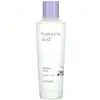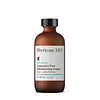What's inside
What's inside
 Key Ingredients
Key Ingredients

 Benefits
Benefits

 Concerns
Concerns

 Ingredients Side-by-side
Ingredients Side-by-side

Water
Skin ConditioningButylene Glycol
HumectantHydroxyethyl Acrylate/Sodium Acryloyldimethyl Taurate Copolymer
Emulsion StabilisingTrehalose
HumectantPEG-40 Hydrogenated Castor Oil
EmulsifyingPPG-26-Buteth-26
Skin ConditioningEthylhexylglycerin
Skin ConditioningCaprylyl Glycol
EmollientParfum
MaskingPortulaca Oleracea Extract
Skin ConditioningPhenoxyethanol
PreservativeMalpighia Emarginata Fruit Extract
Skin ConditioningSodium Hyaluronate
HumectantDisodium EDTA
Vaccinium Angustifolium Fruit Extract
Skin ProtectingLinalool
PerfumingTromethamine
BufferingButylphenyl Methylpropional
PerfumingCitronellol
PerfumingHexyl Cinnamal
PerfumingHibiscus Sabdariffa Flower Extract
Skin ConditioningWater, Butylene Glycol, Hydroxyethyl Acrylate/Sodium Acryloyldimethyl Taurate Copolymer, Trehalose, PEG-40 Hydrogenated Castor Oil, PPG-26-Buteth-26, Ethylhexylglycerin, Caprylyl Glycol, Parfum, Portulaca Oleracea Extract, Phenoxyethanol, Malpighia Emarginata Fruit Extract, Sodium Hyaluronate, Disodium EDTA, Vaccinium Angustifolium Fruit Extract, Linalool, Tromethamine, Butylphenyl Methylpropional, Citronellol, Hexyl Cinnamal, Hibiscus Sabdariffa Flower Extract
Water
Skin ConditioningAlcohol Denat.
AntimicrobialDimethyl Mea
BufferingTetrapeptide-21
Skin ConditioningZinc Gluconate
Skin ConditioningMagnesium Aspartate
Skin ConditioningAcetyl Tyrosine
Skin ConditioningSalicylic Acid
MaskingCopper Gluconate
Skin ConditioningSodium Hyaluronate
HumectantEthylhexylglycerin
Skin ConditioningDisodium EDTA
PEG-40 Hydrogenated Castor Oil
EmulsifyingPPG-26-Buteth-26
Skin ConditioningCaprylyl Glycol
EmollientGlycerin
HumectantButylene Glycol
HumectantPhenoxyethanol
PreservativeSorbic Acid
PreservativeParfum
MaskingLimonene
PerfumingLinalool
PerfumingWater, Alcohol Denat., Dimethyl Mea, Tetrapeptide-21, Zinc Gluconate, Magnesium Aspartate, Acetyl Tyrosine, Salicylic Acid, Copper Gluconate, Sodium Hyaluronate, Ethylhexylglycerin, Disodium EDTA, PEG-40 Hydrogenated Castor Oil, PPG-26-Buteth-26, Caprylyl Glycol, Glycerin, Butylene Glycol, Phenoxyethanol, Sorbic Acid, Parfum, Limonene, Linalool
 Reviews
Reviews

Ingredients Explained
These ingredients are found in both products.
Ingredients higher up in an ingredient list are typically present in a larger amount.
Butylene Glycol (or BG) is used within cosmetic products for a few different reasons:
Overall, Butylene Glycol is a safe and well-rounded ingredient that works well with other ingredients.
Though this ingredient works well with most skin types, some people with sensitive skin may experience a reaction such as allergic rashes, closed comedones, or itchiness.
Learn more about Butylene GlycolCaprylyl Glycol is a humectant and emollient, meaning it attracts and preserves moisture.
It is a common ingredient in many products, especially those designed to hydrate skin. The primary benefits are retaining moisture, skin softening, and promoting a healthy skin barrier.
Though Caprylyl Glycol is an alcohol derived from fatty acids, it is not the kind that can dry out skin.
This ingredient is also used as a preservative to extend the life of products. It has slight antimicrobial properties.
Learn more about Caprylyl GlycolDisodium EDTA plays a role in making products more stable by aiding other preservatives.
It is a chelating agent, meaning it neutralizes metal ions that may be found in a product.
Disodium EDTA is a salt of edetic acid and is found to be safe in cosmetic ingredients.
Learn more about Disodium EDTAEthylhexylglycerin (we can't pronounce this either) is commonly used as a preservative and skin softener. It is derived from glyceryl.
You might see Ethylhexylglycerin often paired with other preservatives such as phenoxyethanol. Ethylhexylglycerin has been found to increase the effectiveness of these other preservatives.
Linalool is a fragrance and helps add scent to products. It's derived from common plants such as cinnamon, mint, citrus, and lavender.
Like Limonene, this ingredient oxidizes when exposed to air. Oxidized linalool can cause allergies and skin sensitivity.
This ingredient has a scent that is floral, spicy tropical, and citrus-like.
Learn more about LinaloolParfum is a catch-all term for an ingredient or more that is used to give a scent to products.
Also called "fragrance", this ingredient can be a blend of hundreds of chemicals or plant oils. This means every product with "fragrance" or "parfum" in the ingredients list is a different mixture.
For instance, Habanolide is a proprietary trade name for a specific aroma chemical. When used as a fragrance ingredient in cosmetics, most aroma chemicals fall under the broad labeling category of “FRAGRANCE” or “PARFUM” according to EU and US regulations.
The term 'parfum' or 'fragrance' is not regulated in many countries. In many cases, it is up to the brand to define this term.
For instance, many brands choose to label themselves as "fragrance-free" because they are not using synthetic fragrances. However, their products may still contain ingredients such as essential oils that are considered a fragrance by INCI standards.
One example is Calendula flower extract. Calendula is an essential oil that still imparts a scent or 'fragrance'.
Depending on the blend, the ingredients in the mixture can cause allergies and sensitivities on the skin. Some ingredients that are known EU allergens include linalool and citronellol.
Parfum can also be used to mask or cover an unpleasant scent.
The bottom line is: not all fragrances/parfum/ingredients are created equally. If you are worried about fragrances, we recommend taking a closer look at an ingredient. And of course, we always recommend speaking with a professional.
Learn more about ParfumPeg-40 Hydrogenated Castor Oil is derived from castor oil and polyethylene glycol (PEG). It is used as a emollient and emulsifier.
As an emulsifier, it helps prevent ingredients from separating. It also helps make the other ingredients more soluble; it is often used to solubilize fragrances. This increases spreadability and elongates shelf life in a product.
Emollients help soothe and soften the skin. They do this by creating a protective film on your skin. This barrier helps trap moisture and keeps your skin hydrated. Emollients may be effective at treating dry or itchy skin.
This ingredient may or may not be vegan, depending on the source.
Peg-40 Hydrogenated Castor Oil may not be fungal-acne safe. We recommend speaking with a professional if you have any questions or concerns.
Learn more about PEG-40 Hydrogenated Castor OilPhenoxyethanol is a preservative that has germicide, antimicrobial, and aromatic properties. Studies show that phenoxyethanol can prevent microbial growth. By itself, it has a scent that is similar to that of a rose.
It's often used in formulations along with Caprylyl Glycol to preserve the shelf life of products.
We don't have a description for PPG-26-Buteth-26 yet.
Sodium Hyaluronate is hyaluronic acid's salt form. It is commonly derived from the sodium salt of hyaluronic acid.
Like hyaluronic acid, it is great at holding water and acts as a humectant. This makes it a great skin hydrating ingredient.
Sodium Hyaluronate is naturally occurring in our bodies and is mostly found in eye fluid and joints.
These are some other common types of Hyaluronic Acid:
Learn more about Sodium HyaluronateWater. It's the most common cosmetic ingredient of all. You'll usually see it at the top of ingredient lists, meaning that it makes up the largest part of the product.
So why is it so popular? Water most often acts as a solvent - this means that it helps dissolve other ingredients into the formulation.
You'll also recognize water as that liquid we all need to stay alive. If you see this, drink a glass of water. Stay hydrated!
Learn more about Water